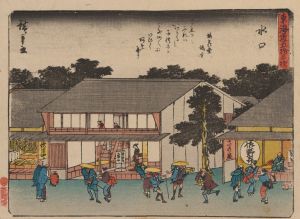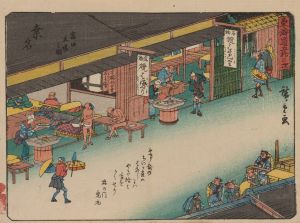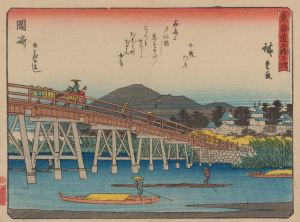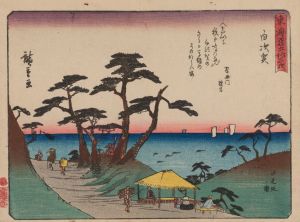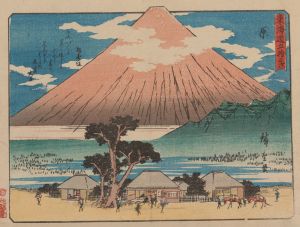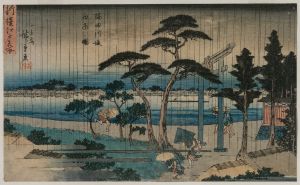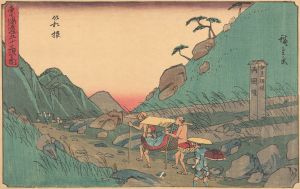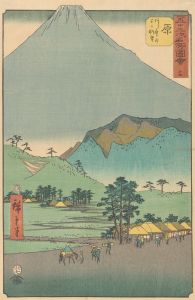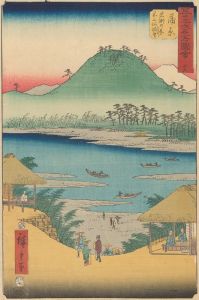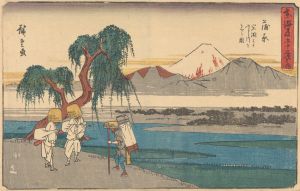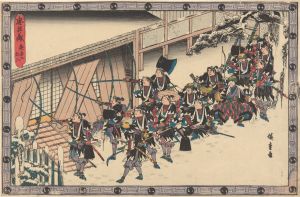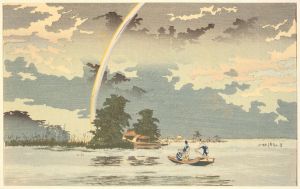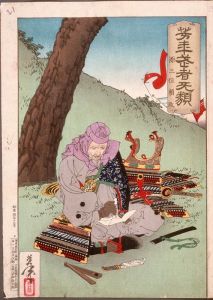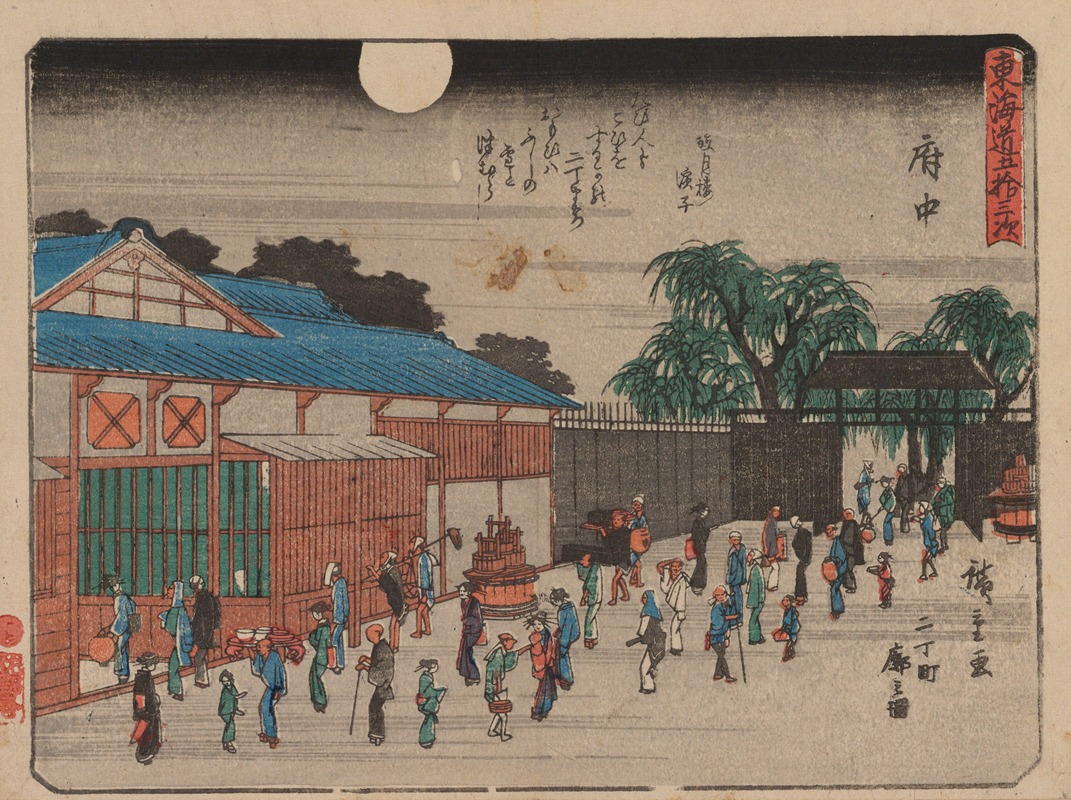
Tokaido gojusantsugi, Pl.20
A hand-painted replica of Andō Hiroshige’s masterpiece Tokaido gojusantsugi, Pl.20, meticulously crafted by professional artists to capture the true essence of the original. Each piece is created with museum-quality canvas and rare mineral pigments, carefully painted by experienced artists with delicate brushstrokes and rich, layered colors to perfectly recreate the texture of the original artwork. Unlike machine-printed reproductions, this hand-painted version brings the painting to life, infused with the artist’s emotions and skill in every stroke. Whether for personal collection or home decoration, it instantly elevates the artistic atmosphere of any space.
Andō Hiroshige, a prominent Japanese ukiyo-e artist of the Edo period, is renowned for his landscape prints and his series depicting the Tokaido Road, a vital route connecting Edo (modern-day Tokyo) to Kyoto. One of the most celebrated series by Hiroshige is "The Fifty-three Stations of the Tokaido" (Tokaido gojusantsugi), which captures the scenic beauty and cultural significance of the various post stations along this historic road. Plate 20 of this series is a notable work that exemplifies Hiroshige's mastery in landscape art and his ability to convey the atmosphere of a specific location.
The Tokaido Road was the most important of the Five Routes of the Edo period, serving as a major artery for travel and trade. It was dotted with 53 official post stations, where travelers could rest, eat, and prepare for the next leg of their journey. Hiroshige's series, created after his own journey along the Tokaido in 1832, offers a visual travelogue of these stations, each print capturing the unique characteristics of the location it represents.
Plate 20 of the series depicts the post station of Mariko, known for its picturesque setting and famous local delicacies. In this print, Hiroshige illustrates a tranquil scene featuring travelers stopping at a roadside tea house, a common sight along the Tokaido. The composition is marked by its harmonious balance of natural and human elements, showcasing Hiroshige's skill in integrating figures into the landscape without disrupting the overall serenity of the scene.
Hiroshige's use of color and line in this print is particularly noteworthy. The soft, muted colors evoke a sense of calm and reflect the natural beauty of the Japanese countryside. The artist employs a technique known as bokashi, or color gradation, to create depth and atmosphere, particularly in the sky and distant hills. This technique, combined with the delicate lines used to depict the figures and architectural elements, highlights Hiroshige's attention to detail and his ability to capture the essence of a moment in time.
The Tokaido series, including Plate 20, was highly influential and contributed significantly to Hiroshige's reputation as a master of ukiyo-e. His work not only provides a glimpse into the daily life and landscapes of Edo-period Japan but also reflects the cultural and social dynamics of the time. The series was widely popular both in Japan and abroad, influencing Western artists such as Vincent van Gogh and Claude Monet, who admired Hiroshige's innovative compositions and use of perspective.
Hiroshige's depiction of Mariko in Plate 20 remains a testament to his artistic vision and his ability to capture the spirit of a place. Through his work, viewers are transported to the serene landscapes of 19th-century Japan, experiencing the beauty and tranquility of the Tokaido Road as if they were travelers themselves.





